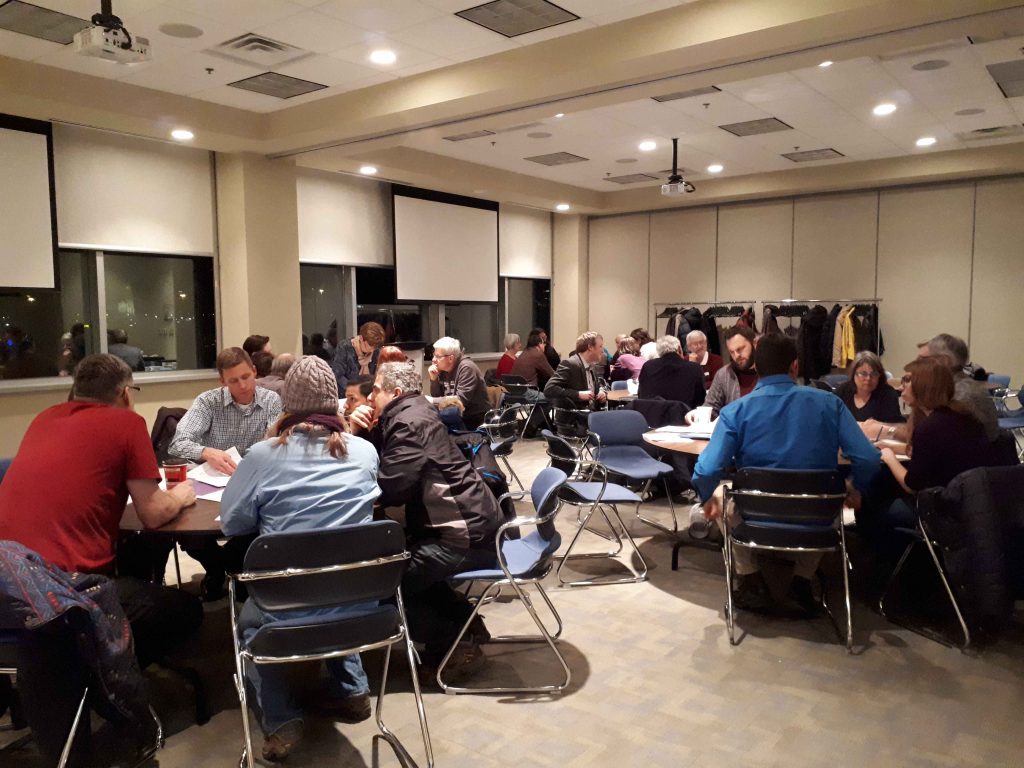What is Participatory Planning?
We get asked all the time about participatory planning. What is it? How does it work?
Participatory planning is a way of doing planning that puts residents at the centre of decision-making in their community. That can be done in many ways, but the end result should be the same: the community feels ownership over the process and the results. They see their hard work reflected in a community vision or projects that get built because of their involvement. Participatory planning addresses some common problems that exist with current engagement in community planning.
Solve specific problems to make planning relevant
One thing that is off putting for otherwise engaged residents, is getting involved in a neighbourhood planning process that leans more heavily on establishing general themes, while limiting the ability to focus on specific outcomes. People’s time is valuable, and often they want more efficient engagement that allows them to have their say at solving tangible, neighbourhood issues they experience daily. For example, safer streets might be a goal of a neighbourhood plan, but if it takes years between establishing that goal and actually making a resident’s street safer, what does that say about the urgency of the problem, or how seriously a municipality is taking residents’ concerns?
As a response to this sense of urgency and relevance, we are often asked to help design better engagement using a participatory planning approach, or PlanLocal as we call it. Instead of a sparsely attended statutory public meeting, think instead of the buzz in a room at the beginning of a neighbourhood planning process where the community is invited to directly point out issues (sometimes literally on a map) on their streets or elsewhere in their neighbourhoods, and then propose ideas or solutions to make their spaces better. This is what a PlanLocal Community Lab looks like, and it helps use grassroots engagement to establish a broader vision for a neighbourhood.
The key balance to be achieved is to simultaneously allows individual citizens to have their say on specific problems, while creating a collective picture of neighbourhood priorities that can inform a vision and goals. For example, it’s one thing for a couple of residents to express a desire to see street calming at a particular street corner, but it’s another to be able to show that 100 or 200 residents feel the same way and another 300 to 400 have similar concerns for other locations throughout their neighbourhoods. Obviously this points to street safety and calming as a collective goal for a neighbourhood plan, but it also pinpoints that goal to a number of specific locations. We refer to this process as data-driven participatory planning as the information that come out gives decision-makers concrete information upon which to base decisions. Participatory planning can be used to build safer streets, better parks, more effective bike routes, and better neighbourhood walkability. The potential applications are endless but it starts with the decision to do engagement differently.
Build a sense of investment through involvement
Another way to turn residents off engagement, is to keep the public at arms-length throughout a planning process. How many people have come to a Public Information Centre (PIC) on a very important issue, only to find that city staff and consultants outnumber members of the public and the options being presented for discussion seem like false choices between outcomes that don’t address many concerns. This scenario, understandably, can lead to a breakdown of trust in the planning process.
Instead of this staff/public dichotomy, participatory planning makes residents partners in a project. They are on the front lines helping to design a process, gather information, and communicate results. For example, we recently designed a project to help a neighbourhood association understand and protect their community character. Instead of doing standard policy research, holding a public meeting for input and presenting results to the client at the end, we decided to design something better. It started from the premise that the people on the front lines of shaping and taking care of their neighbourhood are the people who actually live there. Therefore, we designed a process and trained a group of residents on how to take to the streets to gather information about their neighbourhood character from a number of points of view. Not only did this result is a rich data set of neighbourhood information, it had the effect of creating a group of more informed individuals who were even better equipped to engage in discussion about new development on their streets and could speak to issues of neighbourhood character from a more informed perspective. In this sense, the legacy of the project isn’t just in a report, it’s in the people who actually live in the neighbourhood who can take a more active role in shaping future changes in their neighbourhood.
Public ownership over the local planning process
Participatory planning is designed to harness the deep knowledge and commitment of residents to positively and productively improve their communities. Whether it is positive or negative, residents’ attention on an issue is a signal that a robust discussion needs to take place and it’s a planners responsibility to help facilitate that discussion. At the end of the day, planners should help develop a public sense of ownership over the local planning process and the outcomes from it. After all, the custodians of good planning should reside in the community as well as in city hall.


